- Home
- Cynthia Ozick
Critics, Monsters, Fanatics, and Other Literary Essays Page 4
Critics, Monsters, Fanatics, and Other Literary Essays Read online
Page 4
Begin with necessity. What is essential is a critical mass of critics pursuing the kind of criticism that can define, or prompt, or inspire, or at least intuit, what is happening in a culture in a given time frame. What is needed are critics who can tease out hidden imperatives and assumptions held in common, and who will create the fertilizing conditions that underlie and stimulate a living literary consciousness. In this there is something almost ceremonial, or ceremoniously slow: unhurried thinking, the ripened long (or sidewise) view, the gradualism of deliberate shading. And here the critic comes closest to the historian by preparing the historian’s path. When we speak of an era, an age, a period, a “climate of opinion” (as, in relatively recent times, the Georgian, the Edwardian, the Twenties, the Thirties, and so on), what is meant is a distillation of the insights, arguments, intimations, and even ideas of taste that the critics, in unintended concert, have amassed.
As for will—that conjoined sibling of necessity—much depends on the individual critic’s perception of his task and its motives. In an essay reflecting on his own credo, Kirsch writes: “The critic participates in the world of literature not as a lawgiver or a team captain for this or that school of writing, but as a writer, a colleague of the poet and the novelist. Novelists interpret experience through the medium of plot and character, poets through the medium of rhythm and metaphor, and critics through the medium of other texts. This,” he adds, “is my definition of ‘serious criticism,’ and I think it’s essentially the same today as it was fifty years ago: a serious critic is one who says something true about life and the world.” For Kirsch, lambent poet and discerning modulator, it is hardly a misstep to allow literary criticism to stand as an equal beside the novel and the poem, those deeply susceptible manifestations of the free imagination—since, after all, criticism too can be the source of the visual, the tactile, the emotive; but as a principle it may turn perilous. When the critic ventures too near the mode of the novel, aspiring to fathom the psyche of the author under review, or when he verges still more dangerously on the poet’s power of metaphor, criticism then becomes akin to usurpation: to soul-snatching. Serious criticism is surely a form of literature, but the critic is not an artist with the artist’s freedom of play. A critic is, at bottom, a judge, and judgment ought not to be tentative, or it is flat and useless. Neither ought it to be definitive in the way of drawing out a rounded, completed character that does not exist. And metaphor, when applied as personification, can be either revelation—or lie.
So, in asking for a broad infrastructure of critics and criticism to support and confirm a maturing literary organism, there will be caveats and skepticism. Still, should such an authentically engaged infrastructure ever come into being—or, rather, return, since (at least in our backward-looking trustfulness) it once prospered in large enough numbers to make a recognizable literary force—what would change? Professional reviewers, those hemmed-in heralds of the new, would trudge on as before, useful as always. Prudent publishers would go about their business of expediently touting the sentimental or the shocking while marginally tolerating the serious. Readers would continue to drift away, seduced and socialized by the ever-breeding pixels. The boys in the alley—sophisticated armies on a darkling plain—would continue to clash over accessibility and iconoclasm. But for unfulfilled readers and writers who fret over the neglect of the literary novel, something instinctually different might begin to hover: a hint of innate kinship, a backdrop, the white noise of the era that claims us all. In times that are made conscious of the air they breathe—a consciousness that only a critical infrastructure can supply—the varieties of literary experience become less antagonistic than inquisitively receptive. In the age we have learned to call Victorian, Disraeli and Oscar Wilde, novelists (and spirits) as unlike as can be imagined, evince a certain virtuoso interplay: we know this because criticism has taught us how to see it.
When Lionel Trilling reigned at Columbia, Edmund Wilson, Irving Howe, and Alfred Kazin enlivened the magazines, decade upon decade. Today there are inklings of who might constitute a potential critical aggregate, beginning with the legacy of John Updike, pressing on with essay after essay for forty years: self-evidently, the prophetic Harold Bloom, the scholar-poet Geoffrey Hartman, the formidably rounded and witty Joseph Epstein, the exquisitely indispensable Helen Vendler, the philosopher of literature Bernard Harrison; also Dana Gioia, Edward Mendelson, Richard Howard, Robert Alter, Morris Dickstein, Joyce Carol Oates, Laura Miller, Edward Alexander, Sven Birkerts, Martin Rubin, Michael Dirda, Linda Hall, Christopher Beha, William Giraldi, William Deriesewicz, Thomas Mallon, Wyatt Mason, Ruth Franklin, Louis Menand, Jed Perl, Phillip Lopate, Camille Paglia, Michael Gorra, Arthur Krystal—a range of status, age, consistency of publication, breadth of attentiveness, depth of desire, level of pugnacity. These, and others I have failed to mention, some perhaps in embryo, a few busy elsewhere as poets or novelists—not even these are enough. Passions and principles are copious beyond the anxie-ties of Franzen and Marcus, whose chief urgencies appear to be who will read. The better question is not who will read, or how they will read, but why.
And why really? To catch hold of the tincture and pitch of the hour, the why of the moment, the why of what led to the moment, the why of what may come of the moment, the frights and the fads, the hue and the cry, the why of what is honorable and what is not, the why of what is true and what is lie. It is the why that implicates and judges readers, and reviewers, and publishers, and bestseller lists; and novelists. No novel is an island, entire of itself. And it is again the why that tells us how superior criticism—the novel’s ghostly twin—not only unifies and interprets a literary culture, but has the power to imagine it into being.
Figures
The most elevated book club in the history of American literary commerce had forty thousand subscribers but only three members, and was organized mainly to make money. It was endorsed by a poet of renown: “Poets and Professors and all those whose love of books exceeds their love of automobiles,” he wrote, “will welcome a chance to save in excess of 50% on their book purchases.” The club, of course, was a marketing venture, and its entrepreneurial sales force consisted of Lionel Trilling, Jacques Barzun, and W. H. Auden (it was he who trumpeted the discount). Initiated in 1951 and named The Readers’ Subscription, it mimicked the very successful Book-of-the-Month Club, with this difference: it was consistently and confidently highbrow. Barzun and Trilling, professorial colleagues at Columbia University, had, in fact, together invented the term “culture” as we now know it—or so Barzun claimed in a 2011 review of Adam Kirsch’s Why Trilling Matters, a robust attempt to reassess and resurrect Trilling’s currently faded stature.
But by the time The Readers’ Subscription was under way, all three luminaries were already at the peak of their eminence, Barzun as a leading cultural historian, Trilling as the nation’s most esteemed literary essayist, Auden as one of the two preeminent midcentury poets (the other being the towering Eliot). Each, then, was what Trilling was pleased to call a “figure”: a distinctive thinker or artist who in one way or another stands for the inmost meaning of an era; an interpreter of society and its mainspring. Their common task as facilitators and admen was to select the books offered to subscribers, and to accompany each choice with a clarifying and enriching critical essay. The themes were various, but no volume was less than serious. Auden, for instance, wrote on Colette, Dostoyevsky, Robert Graves, Philip Larkin, John Betjeman, Eliot, Stravinsky, Berlioz, Faulkner, Muriel Spark, Tolkien, Hannah Arendt, and more. Surprisingly, Trilling took up subjects like audio recordings, contemporary theater (“It is not true that I hate the theater”), movies (chiefly Ingmar Bergman), nudity, architecture, James Baldwin, Golding’s Lord of the Flies, Lawrence Durrell, James Agee, The Wind in the Willows (“not one of the sacred books of my childhood, but it might have been”), Isak Dinesen, Bellow’s The Adventures of Augie March (“in the comic tradition”), and other ruminations one might not have expected. Barzu
n, meanwhile, was reflecting on Montaigne (“It was a hill, really, that Montaigne lived on and drew his name from”), Dürer, Virginia Woolf’s diaries, Henry James’s autobiography, Oscar Wilde, Japan, Eskimos, the origin of language, Proust, D. H. Lawrence, Shaw, Molière, and, in Barzun’s own phrase, an encompassing “sense of history.”
There was a kind of playful daring in the vastness of these choices, and Barzun, describing the companionable meetings that led to the final decisions, revealed that they were sometimes lightened by the mutual composition of clerihews. He quoted one of his own: “Henry James / did not name names, / but all the Bostonians knew / who was who.” None of this could disguise the gravity that enveloped not only the advantageous undertakings of the “club,” but the literary tone of the period itself. In an ambitious novel Trilling left unfinished, a character declaims his belief in what was then all-important: “novel or nothing.” But it was also a time of high art or nothing, an Arnoldian idea soon to be scattered and dissolved by the coming of the Beats—for whom “the best which has been thought and said” was turned, ecstatically, into “the best which I have thought and said.” The figure, with all its restrained and dignified sobriety, was being ousted by bards with beards and zithers and weed. And today, half a century later, the figure is no more. Even the pinnacle of fame cannot make a figure: who can conceive of Philip Roth, or Saul Bellow, as an equivalent of Trilling?
Yet we can think of them as critics, at least as a sideline—though Roth’s Reading Myself and Others, together with his Shop Talk: A Writer and His Colleagues and Their Work, could, all on their own, qualify anyone less anointed to be seen as a significantly ample critic. And Bellow poured out essay after essay, catching in his critical net everything from Mozart to Jerusalem to preliterate societies to Wyndham Lewis to Khrushchev, all via a muscular intellect unafraid to be provocative and against the grain. He practiced criticism much as Augie might, “go[ing] at things as I have taught myself, free-style.” In the course of his 1970 Nobel lecture he asked, “And art and literature, what of them? Well,” he answered, “there is a violent uproar, but we are not absolutely dominated by it. We are still able to think, to discriminate, and to feel. The purer, subtler, higher activities have not succumbed to fury or to nonsense. Not yet. Books continue to be written and read. It may be more difficult to cut through the mind of the modern reader, but it is still possible to reach the quiet zone.” It was a hopeful but disenchanted talk.
Nearly fifty years on, there is very little left of the quiet zone, and the fury and the nonsense may have increased, thanks to the proliferation of communication devices not dreamed of when Bellow accepted his medal. He was of the generation of the founders of The Readers’ Subscription, but too restless to have been counted among them as a likely fourth: who can imagine him sitting diligently in meetings while now and then spouting a clerihew or two?
Bernard Malamud, born a year before Bellow, was also a contemporary of the club triumvirate. Himself a figure, one of unique idiom and feelingful moral sensibility, his narrative irony never devolved into raw cynicism. This set him apart from the newer cohort of insouciant novelists who came into prominence decades after The Readers’ Subscription was long forgotten and at least two of its members obscured by time and change; and perhaps it is easier now to see him among them, patiently abstracted in a corner of the sofa, encircled by angels from Harlem and impoverished grocers, shoemakers, and rabbinical students, all invisibly gyrating overhead.
Novel or Nothing: Lionel Trilling
One of the several advantages of living long is the chance to witness the trajectory of other lives, especially literary lives; to observe the whole, as a biographer might; or even, now and then, to reflect on fame with the dispassion of the biblical Koheleth, for whom all eminences are finally diminished. When we look around at the contemporary scene, we are in the dark, we cannot tell who will live on into the next generation, and who will be dismissed or, worse yet, eclipsed and forgotten. The luminaries of our youth and our prime may turn out to be strangers in the world of our old age.
The “we” and the “our” of the previous sentences are readily seen to be usurpations of Lionel Trilling’s characteristic manner—or would be, if Trilling’s prose style, and Trilling himself, were familiar to twenty-first-century readers. But Trilling’s stature, once prodigious, is so reduced as to have become a joke to certain young critics who favor flippancy and lightness and who, if they are aware of Trilling at all, have learned to despise what he called “moral realism.” Unlike Eliot’s self-anointed “I,” intended as the voice of a visiting archbishop, if not a materializing archangel, Trilling’s all-embracing “we” had the effect both of companionable intimacy and of shared authority. It also implied a kind of humanist common sense, what every honest intellect will acknowledge in contemplating the exigencies of mortal existence. “We” carried certainty and conviction, and an openness to the serious and the tragic that Trilling in his later work would identify as sincerity and authenticity.
The breadth of Trilling’s renown can hardly be understood today. He was a professor of literature at a major university who was at the same time a “figure” (a term he honored) in the culture at large. And what was he really? An essayist; and it is tempting to say, given the expository clamor of the moment—its short views and skimpy topicality—merely an essayist. Yet no present-day magazine writer or blogger or reviewer or critic can aspire to what Trilling as essayist encompassed: his aim was nothing less than to define, and refine, civilization. He meant not only to comment or discriminate or analyze or judge, but to “stand for something.” And at his death at age seventy in 1975, what he finally stood for was a scrupulously perceptive and sinuously shaded interpretation of the moral life as expressed in the literature of the West. If the idea of sage could be applied to any American essayist after Emerson, that is what he had become. A more modulated perspective would settle for Trilling as the most discerning, the most reasoned, and certainly the most celebrated critic of his time.
Sage? Essayist? Critic? He did not wish it. It was neither his desire nor his plan. The acclaim that came to him, at forty-three, with the publication of The Liberal Imagination—a collection of ruminations affirming, as he put it, “the inevitable intimate, if not always obvious, connection between literature and politics” in the light of the mind’s “great primal act of imagination”—was gratifying, but it could not satisfy his earliest and most urgent intent. In a public lecture in 1971 (he was then sixty-six years old) he permitted himself an astonishing confession—astonishing, it was later revealed, only to his disbelieving audience. “I am always surprised,” he said, “when I hear myself referred to as a critic . . . If I ask myself why this is so, the answer would seem to be that in some sense I did not ever undertake to be a critic. The plan that did please my thought was certainly literary, but what it envisaged was the career of a novelist. To this intention, criticism, when eventually I began to practice it, was always secondary, an afterthought: in short, not a vocation but an avocation.”
Yet this overt admission of self-repudiation had frequently been enacted privately. Portions of Trilling’s notebooks, published after his death, disclosed remorseful longing, hidden competitiveness, envious ambition. He envied Hemingway, whose vitality in his “most foolish postures” Trilling saw as a model and a reproach. He envied Jack Kerouac, “not wanting K’s book to be good.” He envied instinct, physicality, manliness. He scorned his university colleagues as effete. “My being a professor and a much respected and even admired one is a great hoax,” he wrote bitterly. “Suppose I were to dare to believe that one could be a professor and a man! and a writer!” The writer, he insisted—he meant the writer as novelist—was a man of action, carrying “his death warrant in his pocket.”
It was more than simple yearning. He had the will for it—the compulsion, even under the conditions of his professorial constraints, even while engaged in the opposing rhetoric and argumentum of the essays, to commit t
o a novel. The Middle of the Journey—believed to be Trilling’s sole long fiction—was published the year before The Liberal Imagination, with a very different reception for each: heated praise for the essays, coolness toward the fiction. The disparities of execution were considerable. The complex prose of the essays gave way, in the novel, to plainness—passages of spare, often sparse, narrative logically plotted, and clear colloquial dialogue. The tone was objective and straightforward and nearly bare of imagery, though not of descriptive force or drama. The drama was in the theme, and the theme carried a death warrant in its pocket: the baleful predicament of a brilliant though wayward American, a former secret agent for the Soviets who abandons the Party and is consequently in danger of his life. In an important—and vehement—introduction to a reissue of the novel almost thirty years after its initial publication, Trilling confirmed what had anyhow been generally surmised: that the character of his Communist defector, Gifford Maxim, had been inspired by Whittaker Chambers, with whom Trilling had been acquainted as an undergraduate at Columbia. It was not long before reality intervened to shift speculation into certainty:
From my first conception of it, my story was committed to history—it was to draw out some of the moral and intellectual implications of the powerful attractions to Communism felt by a considerable part of the American intellectual class during the Thirties and Forties. But although its historical nature and purpose are attested to by the explicit reference it makes to certain of the most momentous events of our epoch, the book I wrote in 1946–1947 and published in 1947 did not depict anyone who was a historical figure. When I have said this, however, I must go on to say that among the characters of my story there is one who had been more consciously derived from actuality than any of the others. . . . This person was Whittaker Chambers.

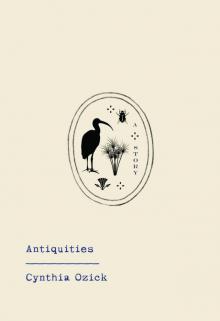 Antiquities
Antiquities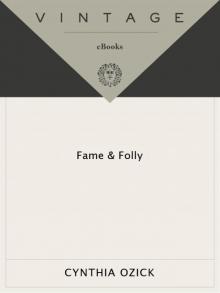 Fame & Folly
Fame & Folly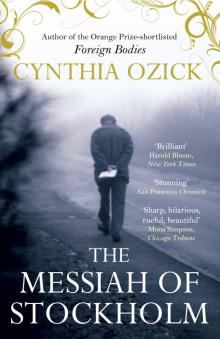 The Messiah of Stockholm
The Messiah of Stockholm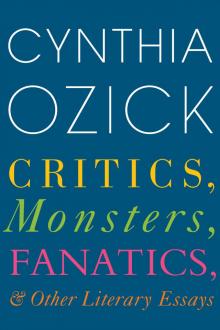 Critics, Monsters, Fanatics, and Other Literary Essays
Critics, Monsters, Fanatics, and Other Literary Essays Heir to the Glimmering World
Heir to the Glimmering World The Din in the Head
The Din in the Head Dictation
Dictation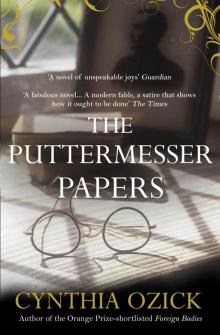 The Puttermesser Papers
The Puttermesser Papers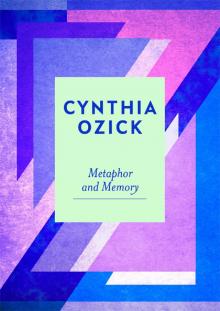 Metaphor and Memory
Metaphor and Memory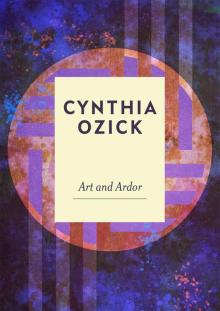 Art and Ardor
Art and Ardor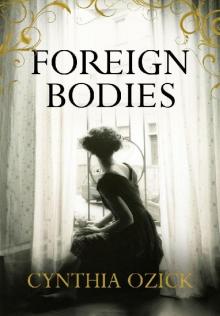 Foreign Bodies
Foreign Bodies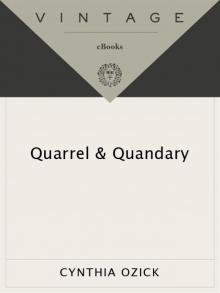 Quarrel & Quandary
Quarrel & Quandary